ZTNA as a Service enhances network security by granting secure access to applications based on user identity and context, replacing traditional VPNs. It offers granular access control, minimizing the risk of unauthorized entry and enhancing security postures.
ZTNA as a Service redefines security by focusing on the secure access principle. Unlike VPNs, it doesn't grant broad network access but restricts application access based on user identity, device health, and location. This minimizes the attack surface and strengthens data protection. Organizations benefit from easily scalable solutions that fit their digital ecosystems while ensuring high security and compliance standards.
What features are essential?ZTNA as a Service finds application in industries like finance and healthcare, where data privacy is critical. These sectors benefit from its robust access control, ensuring only authorized personnel access sensitive information. Manufacturing uses ZTNA for protecting intellectual properties while supporting remote production teams with secure access.
This security solution is beneficial for organizations by offering enhanced security posturing, scalability, and compliance with industry regulations. It provides flexible and efficient methods of securing network access at an application level, reducing risks associated with unauthorized access.
| Product | Market Share (%) |
|---|---|
| Zscaler Zero Trust Exchange Platform | 17.4% |
| Prisma Access by Palo Alto Networks | 13.7% |
| Cato SASE Cloud Platform | 12.5% |
| Other | 56.400000000000006% |


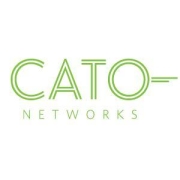

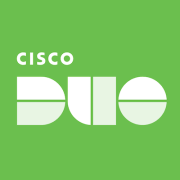





















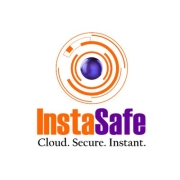


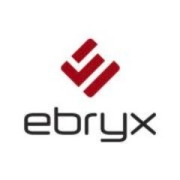


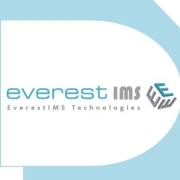








Zero Trust Network Access is an emerging security model that focuses on providing secure access to resources based on the principles of zero trust. ZTNA as a Service is a cloud-based solution that offers organizations the ability to implement ZTNA without the need for extensive infrastructure or expertise. There are several types of ZTNA as a Service providers, each offering unique features and capabilities.
1. Cloud-based ZTNA: These providers offer ZTNA solutions that are entirely cloud-based. They leverage the scalability and flexibility of the cloud to provide secure access to resources from any location. Cloud-based ZTNA providers often offer features such as multi-factor authentication, user and device profiling, and granular access controls.
2. Managed ZTNA: Managed ZTNA providers offer a fully managed service where they handle the implementation, configuration, and maintenance of the ZTNA solution. This is particularly beneficial for organizations that lack the internal resources or expertise to manage their ZTNA infrastructure. Managed ZTNA providers often provide 24/7 monitoring and support to ensure the security and availability of the ZTNA solution.
3. Hybrid ZTNA: Hybrid ZTNA providers offer a combination of on-premises and cloud-based ZTNA solutions. This allows organizations to leverage their existing infrastructure while also benefiting from the scalability and flexibility of the cloud. Hybrid ZTNA providers often provide seamless integration with existing security tools and infrastructure.
4. Identity as a Service with ZTNA: Some providers offer ZTNA as an add-on to their existing IDaaS solutions. This allows organizations to integrate ZTNA capabilities with their identity and access management systems, providing a comprehensive security solution. IDaaS with ZTNA providers often offer features such as single sign-on, identity governance, and privileged access management.
5. Network as a Service with ZTNA: NaaS with ZTNA providers offer a combination of network connectivity and ZTNA capabilities. They provide secure access to resources through their network infrastructure, eliminating the need for organizations to manage their own network infrastructure. NaaS with ZTNA providers often offer features such as secure connectivity, traffic segmentation, and network monitoring.
ZTNA as a Service solutions offer a secure and efficient way to implement Zero Trust principles in an organization's network infrastructure. By leveraging cloud-based solutions, these solutions enable organizations to adopt a Zero Trust approach without the need for extensive on-premises infrastructure or complex configurations. Here's an overview of the different ways ZTNA as a Service works:
1. Cloud-based Architecture:
ZTNA as a Service provuders utilize cloud-based architecture to deliver their services. This eliminates the need for organizations to deploy and manage their own hardware or software infrastructure.
2. Secure Access:
ZTNA as a Service providers ensure secure access to applications and resources by implementing a Zero Trust model. They authenticate and authorize users based on various factors such as user identity, device posture, and contextual information.
3. Identity Verification:
Users are required to authenticate their identity before accessing any resources. This can be achieved through multi-factor authentication methods like passwords, biometrics, or hardware tokens.
4. Micro-segmentation:
ZTNA as a Service Providers implement micro-segmentation to divide the network into smaller segments. Each segment has its own security policies and access controls, reducing the attack surface and limiting lateral movement.
5. Application-level Access:
Instead of granting network-level access, ZTNA as a Service Providers focus on providing application-level access. Users are granted access only to the specific applications or resources they need, based on their role and permissions.
6. Secure Connectivity:
ZTNA as a Service Providers establish secure connections between users and applications, regardless of their location. This is achieved through encrypted tunnels, ensuring data confidentiality and integrity.
7. Continuous Monitoring:
ZTNA as a Service Providers continuously monitor user activities, network traffic, and application behavior. Any suspicious or anomalous behavior is detected and flagged for further investigation.
8. Scalability and Flexibility:
ZTNA as a Service Providers offer scalable solutions that can accommodate organizations of all sizes. They provide flexibility to add or remove users, applications, and resources as per the organization's requirements.
9. Integration with Existing Infrastructure:
ZTNA as a Service Providers seamlessly integrate with an organization's existing infrastructure, including identity providers, firewalls, and security systems. This ensures a smooth transition and minimizes disruption during implementation.
10. Centralized Management:
ZTNA as a Service Providers offer centralized management consoles or dashboards. These consoles provide administrators with visibility and control over user access, policies, and security configurations.
In summary, ZTNA as a Service providers leverage cloud-based architecture, implement Zero Trust principles, and provide secure application-level access to users. ZTNA as a Service offers scalability, flexibility, and centralized management, enabling organizations to enhance their network security posture without the need for extensive on-premises infrastructure.
ZTNA as a Service enhances your network security by providing a zero-trust access model, which ensures that no user or device is trusted by default. This model requires continuous verification processes such as identity verification and device posture checks before granting access to applications and data. This approach minimizes the risk of breaches and unauthorized access by strictly controlling who can access what, thereby strengthening the overall security posture of your network.
What are the key benefits of implementing ZTNA as a Service?Implementing ZTNA as a Service offers several key benefits, including improved security, scalability, and cost-efficiency. By utilizing a zero-trust framework, you are able to protect your network from potential threats more effectively. ZTNA as a Service also scales easily with your organization's growth, allowing you to seamlessly add new users and devices. Moreover, it reduces the need for expensive hardware investments, as it leverages cloud-based solutions, making it a cost-effective option for businesses of all sizes.
Can ZTNA as a Service integrate with existing IT infrastructure?Yes, ZTNA as a Service can integrate with your existing IT infrastructure. It is designed to be compatible with a variety of environments, including hybrid and multi-cloud environments. This means you can implement ZTNA as a Service without the need for a complete overhaul of your current systems. It supports seamless integration with existing identity and access management solutions, ensuring a smooth transition and minimal disruption to your operations.
How does ZTNA as a Service contribute to regulatory compliance?ZTNA as a Service contributes to regulatory compliance by ensuring that access to sensitive information and resources is tightly controlled and monitored. It provides detailed access logs and visibility into user activity, helping you meet compliance requirements for data protection and privacy regulations like GDPR and HIPAA. By employing strict access control measures and ensuring that only authenticated users can access sensitive data, ZTNA as a Service aids in maintaining compliance with industry standards.
What challenges might you face when implementing ZTNA as a Service?When implementing ZTNA as a Service, you might face challenges such as the initial setup complexity and integration issues with legacy systems. Adapting your organization to a zero-trust model requires thorough planning and potential restructuring of existing access policies. Educating your team on the new access protocols can also be a challenge, as staff need to understand the importance and functionality of ZTNA. Nevertheless, these challenges can be mitigated through careful planning, pilot testing, and adequate training to ensure a smooth implementation.